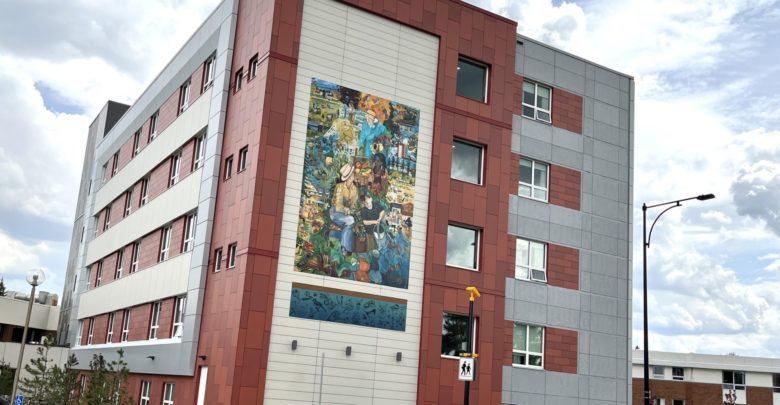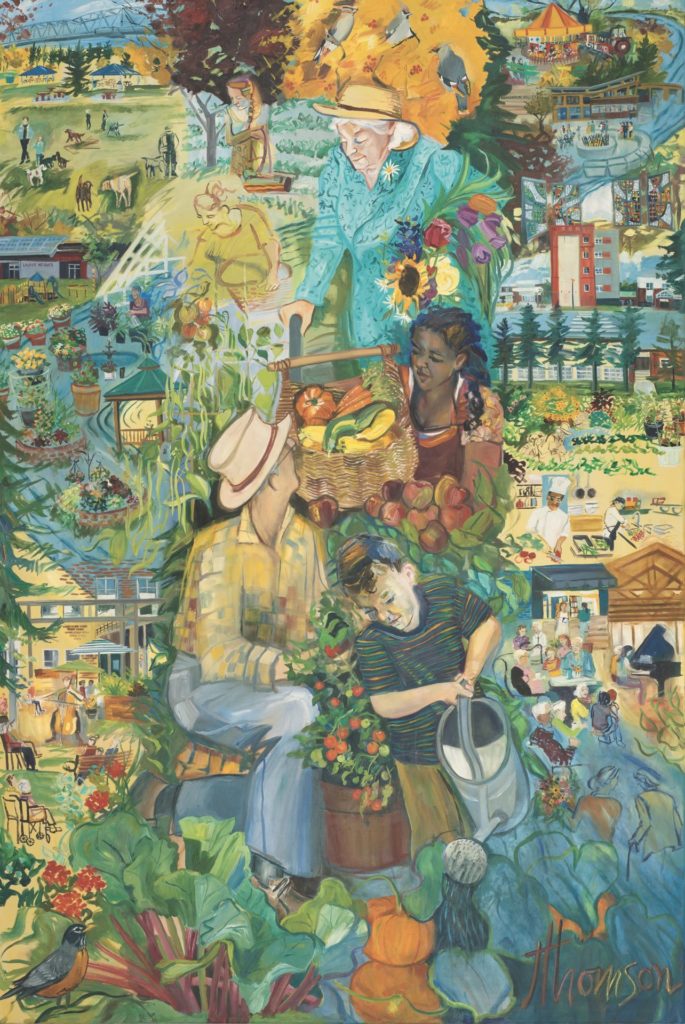U of A Master’s student connects generations through painting
The recent mural designed by Jill Thomson represents connections between generations in the Canterbury community.
 Supplied
SuppliedThrough her series of urban garden paintings, visual artist Jill Thomson connects diverse communities with nature and gardening.
Thomson, who is pursuing a Master’s at the University of Alberta, worked with Megan Strickfaden, her supervisor in the department of material culture and human ecology, on this painting. This series of urban garden paintings is a part of Thomson’s Master’s project.
Strickfaden’s work usually includes art-based research and working with visual artists. Alongside researchers, Thomson was tasked with the visual aspect of the research art film, creating the mural and painting at Canterbury Care Nursing Home in Laurier Heights. The theme was urban gardens.
“Gardening in the community is a way of changing urban environments,” Thomson said.
The mural became part of Strickfaden’s film which Thomson describes as having its own connected story. The project was funded by Colliers Project Leaders and CareRX.
“There is a narrative around the film — a script that’s been created for the film about people in an urban garden who find a community inside the garden and that’s the central core of the painting — these figures.”
Thomson has received amazing feedback from the residents and the community but also from the U of A and the department of human ecology who have responded favourably to the project.
Throughout the project, Thomson conducted drawing workshops online via Zoom, increasing emphasis on the collaboration aspect of the project. During these workshops, the seniors would draw still life of fruits, vegetables, and eventually local birds in white and black charcoal. Thomson was inspired by Frida Kahlo’s art workshops which encouraged her students to go out locally, expressing this inspiration through “a feeling of outside” in her workshops by bringing in the items to the residence on occasion.

“[From the residents] there was a lot of talk about their grandparents, their grandchildren, and how they had passed on knowledge about favourite plants … and how gardening is this continuum of connection between different generations.”
The mural is a reproduction on the exterior of the building. The true oil painting is inside so that residents who are more immobile or with eyesight issues can have an intimate connection to it. Thomson would come into the residence some days so that the seniors could follow the process of the painting as it was coming along, and take ownership of the process.

The inclusion of the residents’ opinions and thoughts can be seen in the painting. An example of this is a dog park that they all treasure being in the final result. There is a section dedicated to land acknowledgment; a river running down the piece represents the Sipiwiyiniwak community where the building is located and at the inauguration of the mural, there was smudging.
Additionally, at the base of the mural is a banner with drawings from the workshops.
“We encouraged the residents to write too … [because] we wanted their handwriting,” Thomson said. “There are some ideas about what they’re drawing and some stories about memories of plants in the mural.”
Her favourite part of the project was seeing it realized and connecting the two situations of Canterbury Care and the community.
“[My favourite part of the project is] this area with a bunch of chairs where the residents are, where they can connect to it [the painting] and look for things close up and the community has this experience with the painting on a large scale.”




